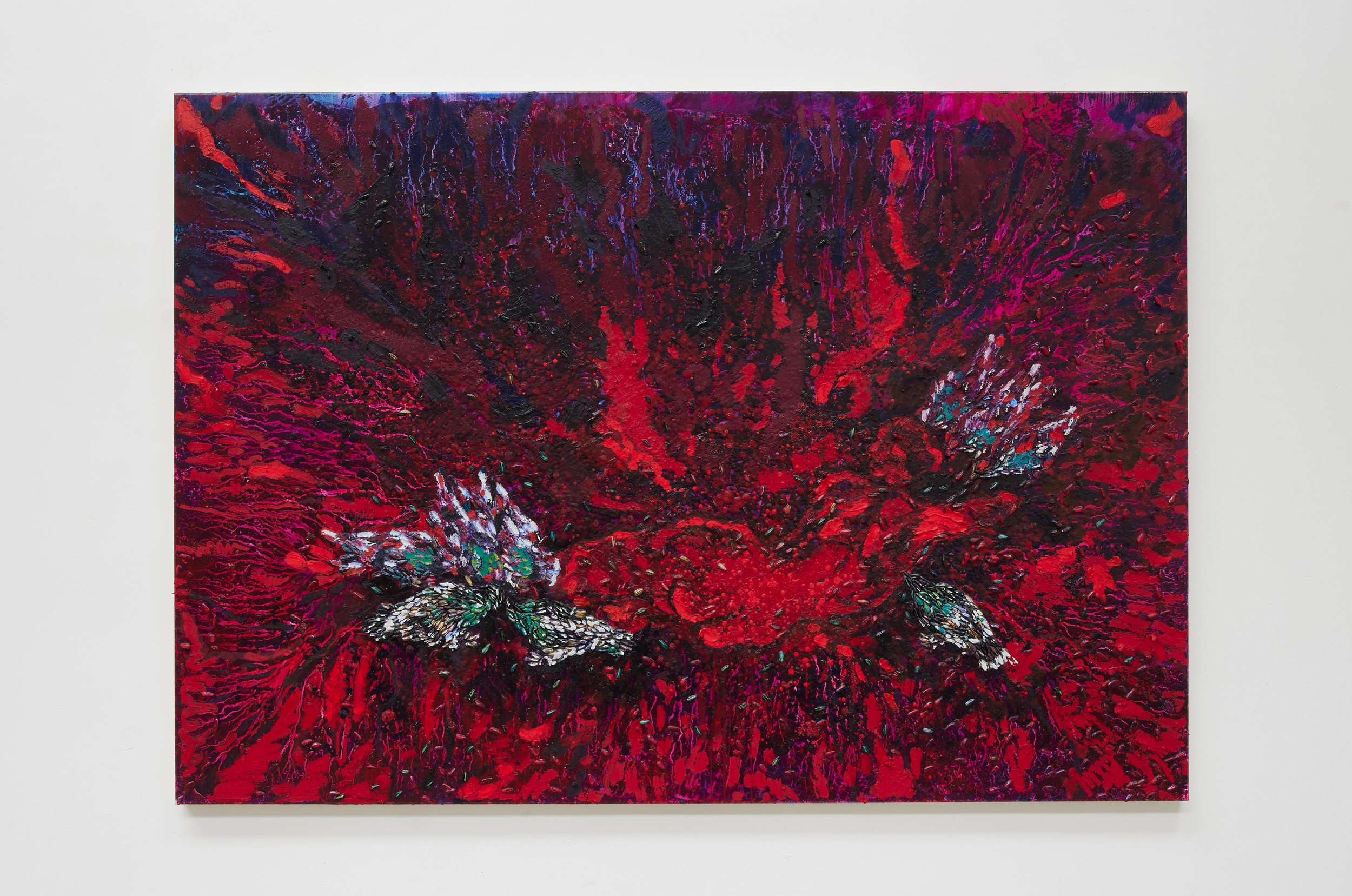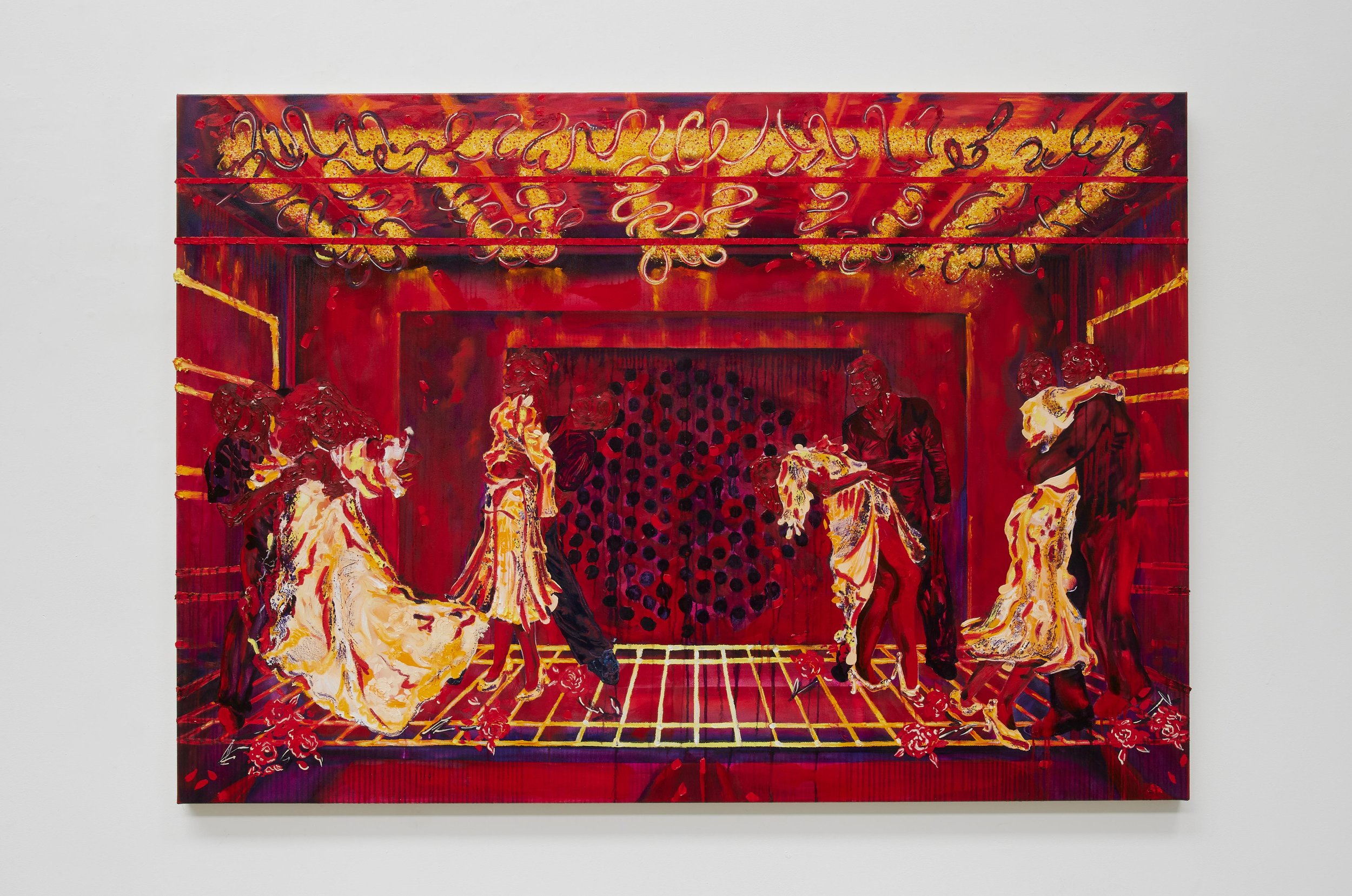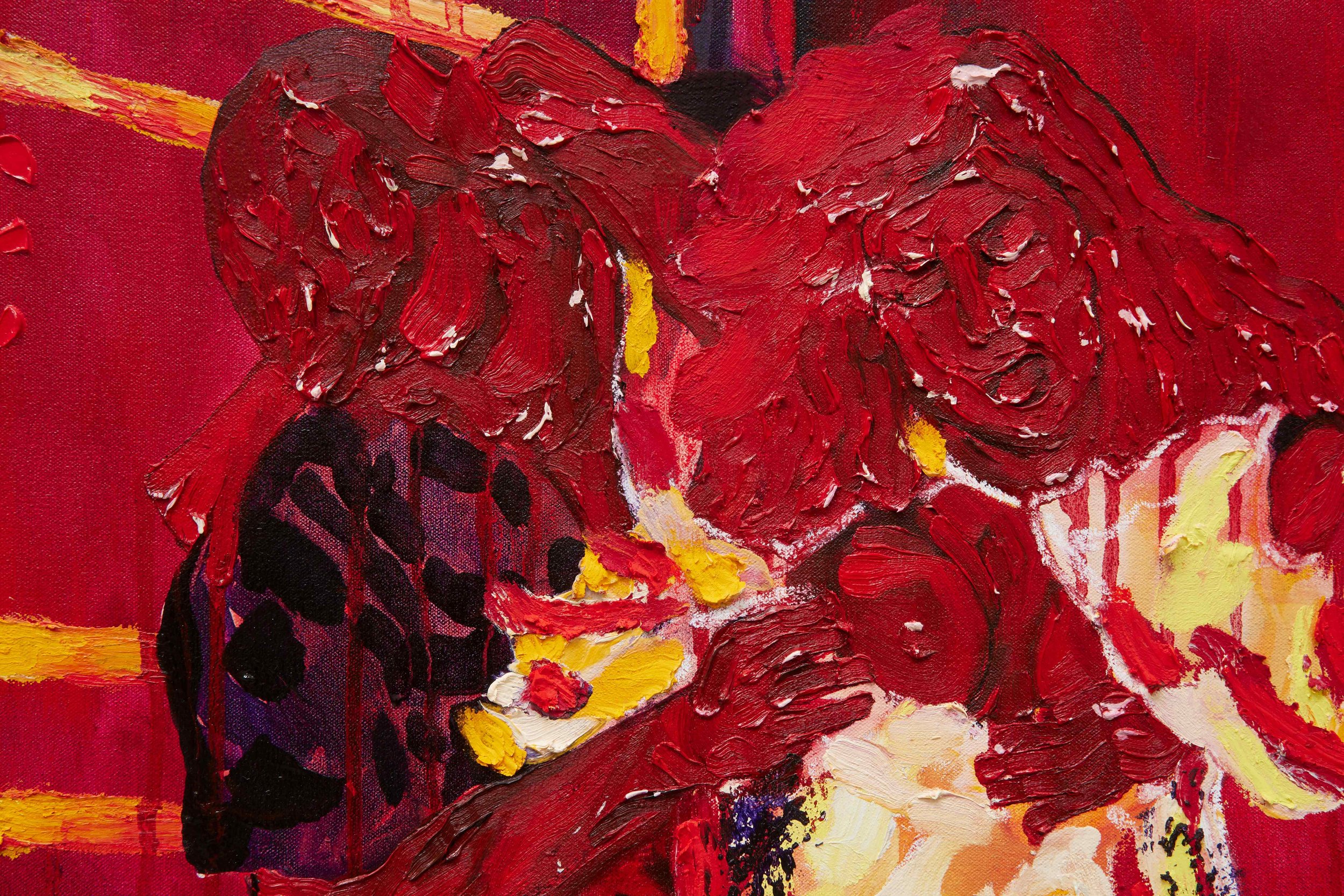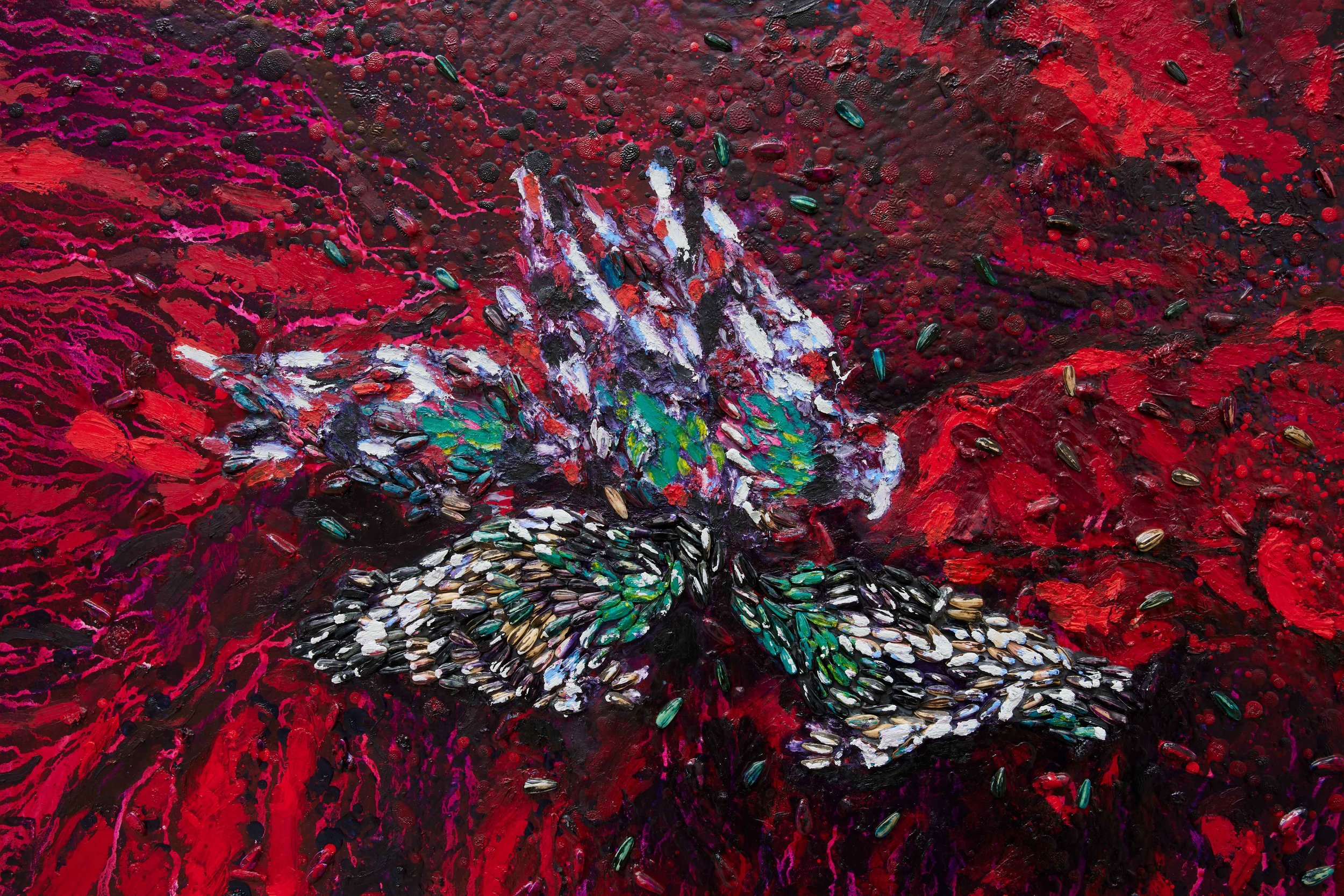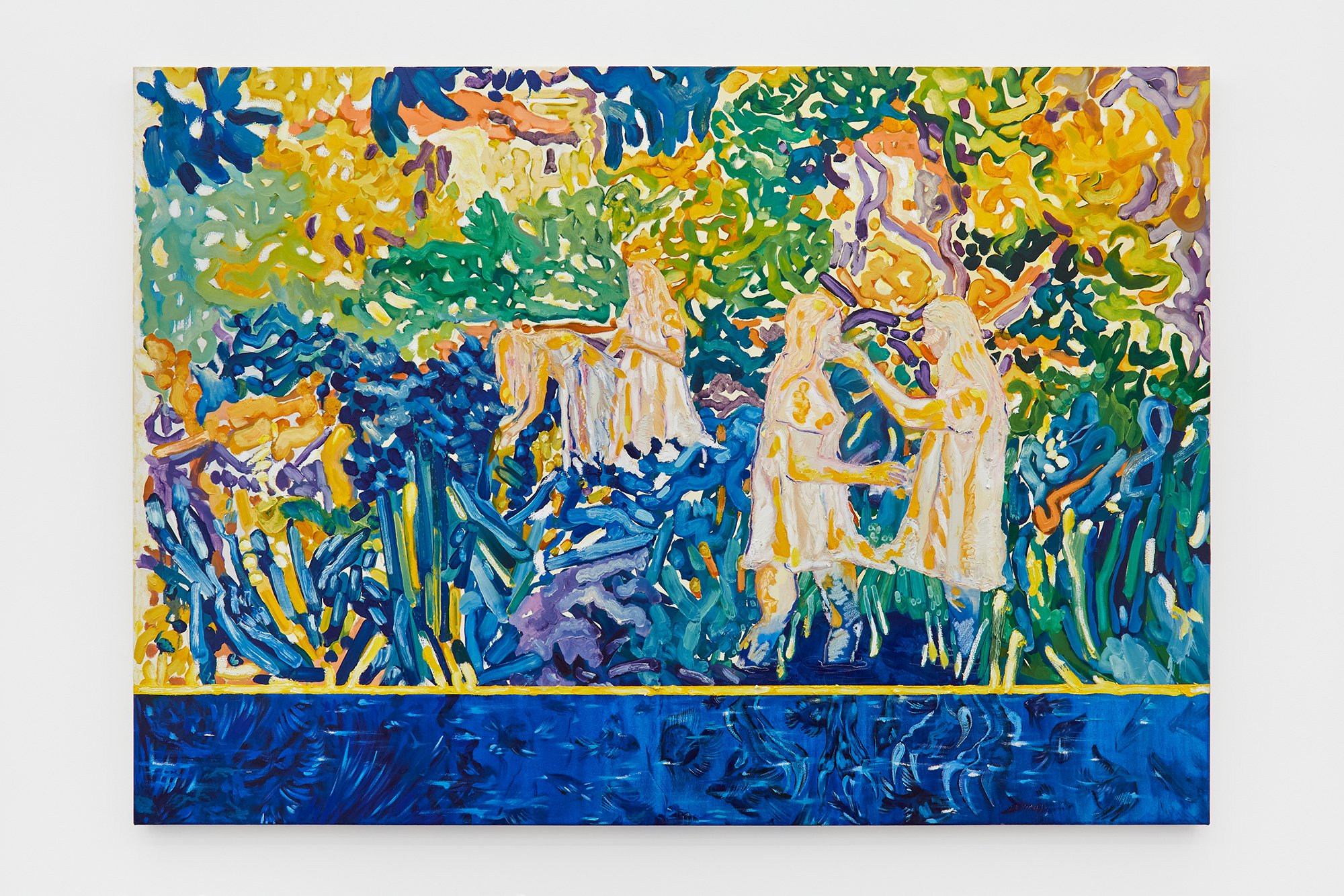Katie Tomlinson
Katie Tomlinson (b. 1996, Tees Valley) is a painter based in Manchester, represented by Brooke Benington, London. She holds an MA in Painting from the Royal College of Art, London (2021–2023), supported by the Basil H. Alkazzi Scholarship Award.
Recent solo exhibitions include Fantasy Girls (2024) at Liminal Gallery, Margate; They Only Want You When You’re Seventeen (2024) at LKIF, Seoul; At Least Buy Me Dinner First (2023) at Brooke Benington, London; and Fight The Moon (2022) at Paradise Works, Manchester.
In 2025, Tomlinson was awarded an Arts Council England Developing Your Creative Practice grant, shortlisted for Tees Valley Artist of the Year, and longlisted for the John Moores Painting Prize. She also exhibited in Any, Body, Home at Warrington Art Gallery, Warrington, and at MEGA Art Fair, Milan. In 2024, she was selected for 40 Years of the Future: Painting at Castlefield Gallery and shortlisted for The Hari International Art Prize and the BEEP Painting Biennial.
Group exhibitions include Viewing Room, Galerie Supermarkt, Tokyo (2024); A Mirror to Vanity, Brooke Benington, London (2024); LET THE ABSENCE SPEAK, curated by Mattia Pizzani and Marta Orsola Sironi, Milan, Italy (2023); Buried in Affection, Galerie Supermarkt, Tokyo (2022); Stories, Bankley Gallery, Manchester (2022); Fayre Share Fayre, The Whitworth Art Gallery, Manchester (2022); A star is just a memory of a star, Brooke Benington, London (2022); RAW, Soho Revue, London (2022); and Obstructions, Castlefield Gallery, Manchester (2021).
Tomlinson’s growing critical recognition includes a public conversation with Louisa Buck, a contextual essay by Dr Jenny Eden, and an upcoming critical essay by writer and curator Matt Price (Contemporary British Painting, Anomie Publishing).
Through a queer feminist lens, Katie Tomlinson’s paintings depict ambiguous narratives that interrogate heteronormativity, body politics and the exploitative paradigm in which feminine beauty is controlled.
Tomlinson categorises her practice into two distinct modes: ‘cropped’ and ‘narrative’ paintings. Both approaches are employed to challenge and reconfigure how the viewer interacts with the painted image. The cropped paintings are tightly framed compositions that reference the notional, voyeuristic, ‘keyhole’ viewpoint. Whilst the narrative paintings frame the canvas as a portal into an enacted scene, the artist employs theatrical strategies - most notably Bertolt Brecht’s Distancing Effect - to render the familiar strange. In doing so, viewers are encouraged to assume a position of critical engagement, becoming conscious of their role as observers and compelled to interrogate the politics of looking, rather than passively spectating.
Across both modes, Tomlinson uses vivid colour, playful and surreal motifs, layered symbolism, and varied applications of paint. Each work is imbued with tension, hidden meanings, and shifting tempos. The paintings function both as an inquiry into the possibilities of the medium and as a vehicle for storytelling. The characters within these pictorial tableaux demand closer scrutiny, prompting questions about their identities, motivations, histories, and roles within these queering and subversive narratives.
The paintings overtly reference moments throughout the canon of Western, patriarchal, art history. The works reconsider, reconfigure, and reclaim specific moments from Painting's problematic past - specifically depictions of women. Harbouring this as a tool to enhance, develop, and reinforce the paintings’ contemporary social themes within the post-MeToo era.

